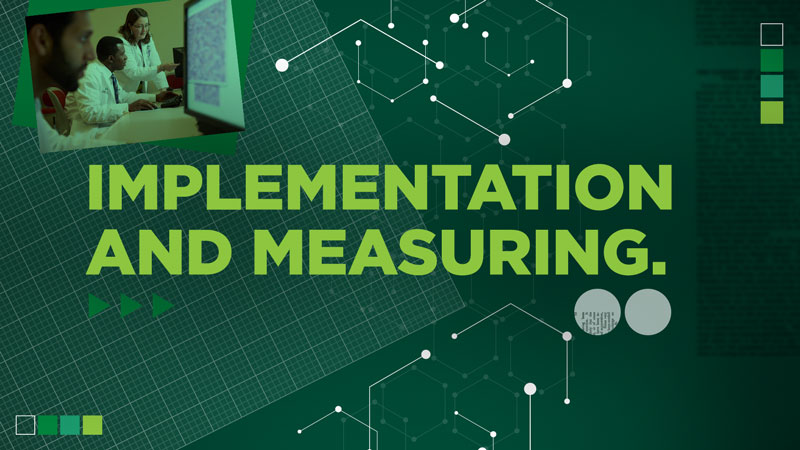Implement and Measure Progress

Steering Committee
The College of Human Medicine will form a Strategic Planning Steering Committee (SPSC) to oversee and guide the effort. The SPSC committee will consist of 6-8 members, who will meet quarterly to monitor progress on implementation. The SPSC will support coordination between implementation workgroups, advise implementation workgroups on consistency of their efforts with the spirit of the strategic plan, and work with the dean to ensure efforts are appropriately resourced. The SPSC will initially meet monthly through first quarter calendar year 2023 to finalize workplans and methods and determine appropriate measures of progress. The SPSC will also develop a communications plan to update the college and university of our efforts and initiatives. They will also help present success/progress to groups of constituencies of whom they are members.
Implementation Workgroups
Implementation workgroups formed by the strategic planning steering committee will drive different areas of the plan. The workgroups mirror the key strategic areas, the grand challenge and ongoing committee work focused on diversity, equity, and inclusion:
- Health Equity Grand Challenge
- Dean’s Advisory Committee on Diversity
- Student Success
- Staff and Faculty Success
- Research and Scholarship
- Healthy Communities
Five implementation workgroups consisting of 8-10 members each will be selected to ensure broad representation across the college, inclusive of the key constituencies and reflective of the diversity of our community. The dean will discuss workgroup membership with the SPSC to ensure equitable representation.
Methods and Indicators
During the plan development process, workgroups discussed indicators the college may use to track progress toward key goals (see draft list below). Implementation workgroups will propose a set of indicators, and an explanation of methods for collecting and analyzing them, during the first quarter of calendar year 2023. Final recommendations will be presented to the SPSC to identify areas of synergy and overlap across workgroups.
| Student Success | |||||
| Number of students paired with a mentor | Number of URM students | Student debt | Graduation rate | Step 1 Pass Rate | Academic staff satisfaction/turnover |
| Faculty and Staff Success | ||
| Faculty/staff recruitment | Faculty/staff retention | New faculty and staff hired |
| Research and Scholarship | ||||
| Number/number of submissions by type | Number/amount awarded | Percent connected to Health Equity ($/#) | Number of publications by by type | Research staff/faculty satisfaction and retention |
| Healthy Communities | ||||
| Number of grads working in Michigan |
Number of grads working in underserved areas |
Type of clinical practice of grads |
Clinical staff/faculty satisfaction and retention |
Residency placement in partnering hospitals |
|
Med school placement at partnering hospitals |
Cost/revenue |
Economic impact in community
|

